Biology > QUESTIONS & ANSWERS > BIO 105 final exam test questions with well shown answers new docs 2020 (All)
BIO 105 final exam test questions with well shown answers new docs 2020
Document Content and Description Below
BIO 105 final exam test questions with well shown answers new docs 2020 The region of an enzyme to which a substrate binds is called the ________ site. A) active B) substrate C) enzymatic D)... inactive Diffusion is an example of ________. A) phagocytosis B) active transport C) endocytosis D) passive transport A cell that neither gains nor loses a net amount of water at equilibrium when it is immersed in a solution is ________. A) isotonic to its environment B) hypertonic to its environment C) hypotonic to its environment D) metabolically inactive Active transport ________. A) uses ATP as an energy source B) can move solutes against their concentration gradient C) can involve the transport of ions D) all of the answer options Facilitated diffusion across a biological membrane requires ________ and moves a substance ________ its concentration gradient. A) energy... down B) transport proteins... down C) energy and transport proteins... against D) transport proteins... against A balloon permeable to water but not to glucose contains a 17% glucose solution. A beaker contains a 10% glucose solution. Which of the following is TRUE? A) The solution in the beaker is hypertonic relative to the solution in the balloon. B) The solution in the balloon is isotonic; the solution in the beaker is hypertonic. C) The solution in the balloon is hypotonic relative to the solution in the beaker. D) The solution in the balloon is hypertonic relative to the solution in the beaker. The water for the above example will A)Move into balloon B)Move out of balloon Within the inner membrane of a chloroplast, interconnected sacs of membrane called ________ are suspended in a thick fluid called the ________. A) chlorophyll... thylakoid B) thylakoids... grana C) thylakoids... stroma D) grana... thylakoid What is the function of stomata? A) water absorption B) Calvin cycle C) location of photosystems D) gas exchange Which of the following equations best summarizes photosynthesis? A) 6 CO2 + 6 H2O + 6 O2 → C6H12O6 B) 6 CO2 + 6 H2O → C6H12O6 + 6 O2 C) 6 CO2 + 6 O2 → C6H12O6 + 6 H2O D) C6H12O6 + 6 O2 → 6 CO2 + 6 H2O Which of the following is produced during the light reactions of photosynthesis? A) O2 B) CO2 C) C6H12O6 D) ADP The Calvin cycle requires ________ and ________ from the light reactions in order to operate. A) glucose... carbon dioxide B) electrons... NADH C) ATP... NADPH The color that we see when looking at a pigmented object is ________. A) the wavelengths that are absorbed by the pigmented object B) the wavelengths that are reflected or transmitted by the pigmented object C) the wavelengths that have been raised to an excited state by the pigmented object D) the wavelengths that the pigmented object created after interacting with sunlight NAD+ turning into NADH is A)Oxidation reaction B)Reduction reaction The light reactions of photosynthesis take place ________. A) in the stroma B) in the mitochondria C) in the thylakoid membrane D) in the cytosol A process is referred to as aerobic if it requires ________. A) oxygen B) carbon dioxide C) ATP D) carbohydrates Plant cells ________. A) do not need chloroplasts because their mitochondria meet their energy needs B) have chloroplasts and mitochondria C) use carbon dioxide but do not use oxygen D) do not need mitochondria because their chloroplasts meet their energy needs Which of the following are produced as a result of cellular respiration? A) ATP and water B) carbon dioxide and ATP C) carbon dioxide, water, and ATP D) oxygen and glucose Where in the cell does glycolysis occur? A) cytoplasm B) endoplasmic reticulum (ER) C) within the fluid just inside the inner mitochondrial membrane D) between the inner and outer mitochondrial membrane Which of the following is the CORRECT sequence of stages in cellular respiration? A) glycolysis, citric acid cycle, electron transport B) citric acid cycle, glycolysis, electron transport C) citric acid cycle, electron transport, glycolysis D) electron transport, glycolysis, citric acid cycle A product of glycolysis is ________. A) lactic acid B) ethyl alcohol C) O2 D) pyruvic acid Electron transport takes place in the ________. A) mitochondria B) chloroplasts C) cytoplasm D) ribosomes ATP synthase plays a role in ________. A) pulling electrons down the electron transport chain B) glycolysis C) pumping hydrogen ions across the inner mitochondrial membrane D) generating ATP Anaerobic respiration produces a maximum of ________ ATP per glucose. A) 0 B) 2 C) 10 D) 38 What waste product do yeast produce under anaerobic conditions? A) ethyl alcohol B) pyruvic acid C) lactic acid D) creatine The mitotic cell cycle results in the production of ________. A) four cells, each with the same amount of genetic material and the same genetic information B) two cells, each with the same amount of genetic material but with different genetic information C) two cells, each with the same amount of genetic material and the same genetic information D) four cells, each with the same amount of genetic material but with different genetic information The CORRECT sequence of stages of mitosis is ________. A) prophase, metaphase, anaphase, telophase B) telophase, prophase, anaphase, metaphase C) anaphase, interphase, prophase, metaphase, telophase D) interphase, prophase, metaphase, anaphase, telophase Which of these events occurs during anaphase? A) Sister chromatids become separate chromosomes. B) Chromosomes line up in the middle of the cell. C) The nuclear envelope reappears. D) The nuclear envelope breaks up. Cytokinesis typically begins during the ________ stage of mitosis. A) telophase B) prophase C) metaphase D) anaphase During metaphase I, ________. A) crossing over occurs B) homologous chromosomes line up in the middle of the cell C) the nuclear envelope breaks up D) sister chromatids separate and migrate to opposite poles Crossing over takes place during -------------------- stage of meiosis Prophase I What is crossing over? Exchange of genes between homologous chromosomes Homologous chromosomes separate during -------------------- stage of meiosis Anaphase I What is independent assortment? During which phase of meiosis does it take place? homologous pairs of chromosomes line up at the equator of the cell. The two pairs of chromosomes can line up in either of two equally probable ways. Metaphase I At the end of meiosis, how many cells result? Are they diploid or haploid? 4 daughter cells and 23 chromosomes haploids Meiosis result in genetically identical cells A) True B)False What is nondisjunction? During which stages of meiosis does it take place? When chromosomes fail to separate properly, occurs in Anaphase [Show More]
Last updated: 1 year ago
Preview 1 out of 5 pages
Instant download
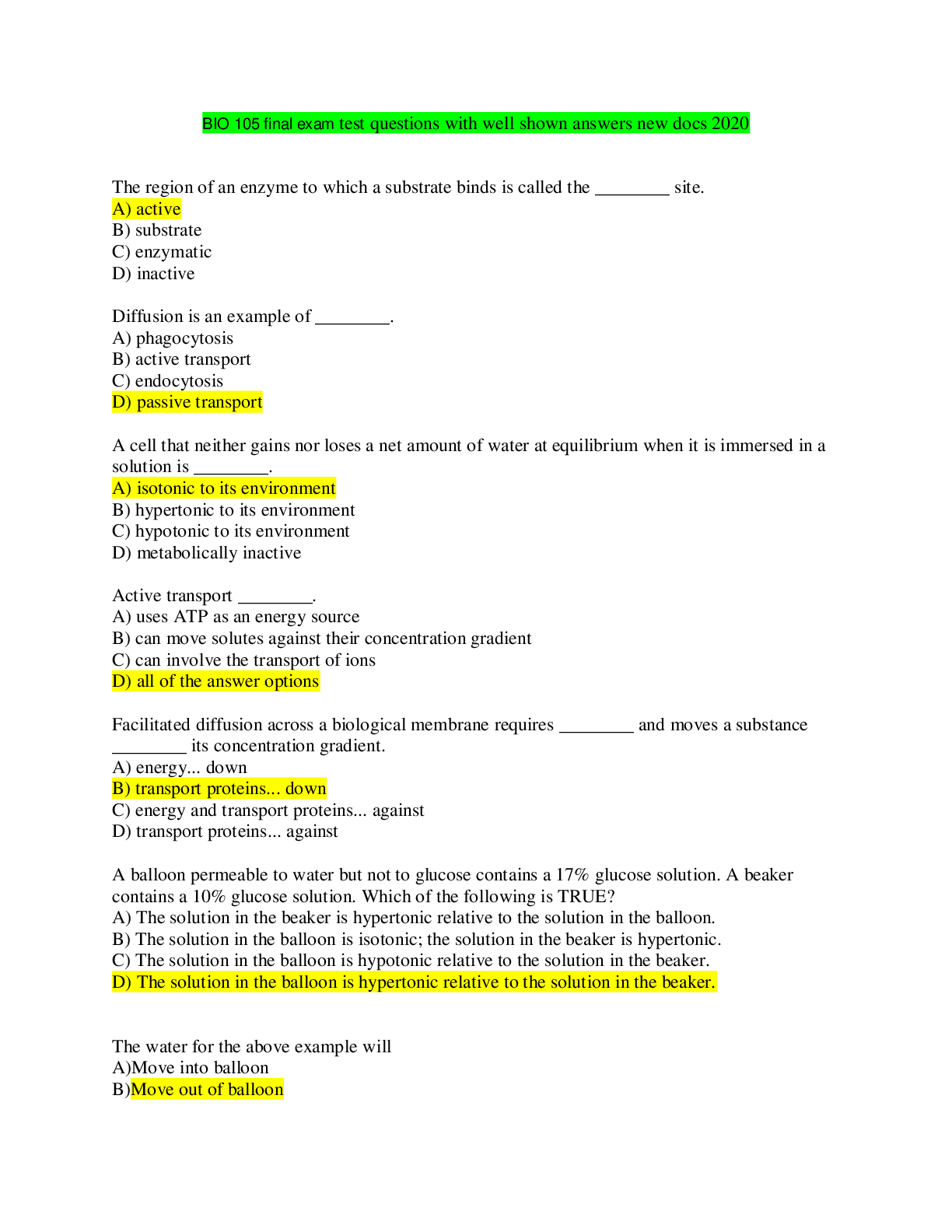
Buy this document to get the full access instantly
Instant Download Access after purchase
Add to cartInstant download
Reviews( 0 )
Document information
Connected school, study & course
About the document
Uploaded On
Dec 14, 2020
Number of pages
5
Written in
Additional information
This document has been written for:
Uploaded
Dec 14, 2020
Downloads
0
Views
70




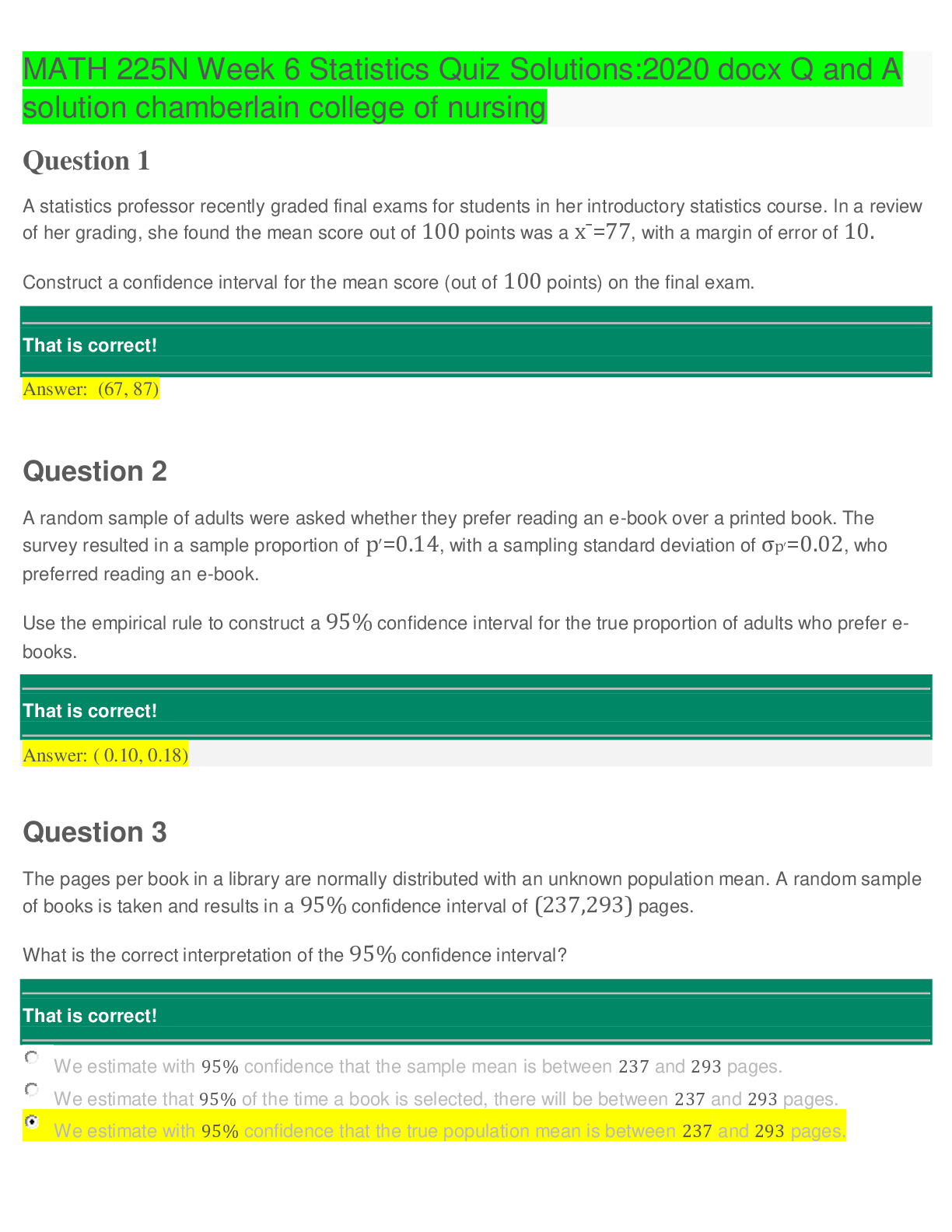

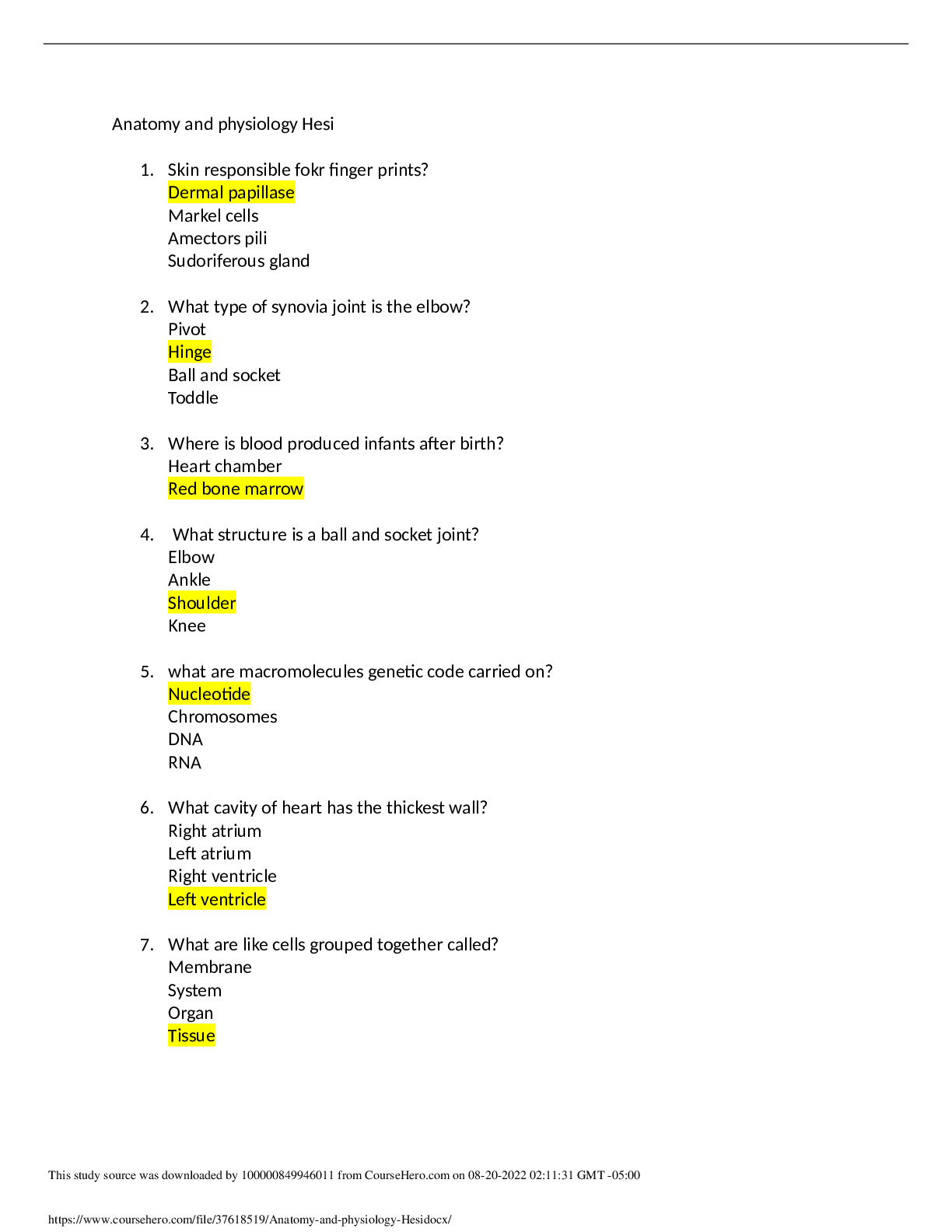
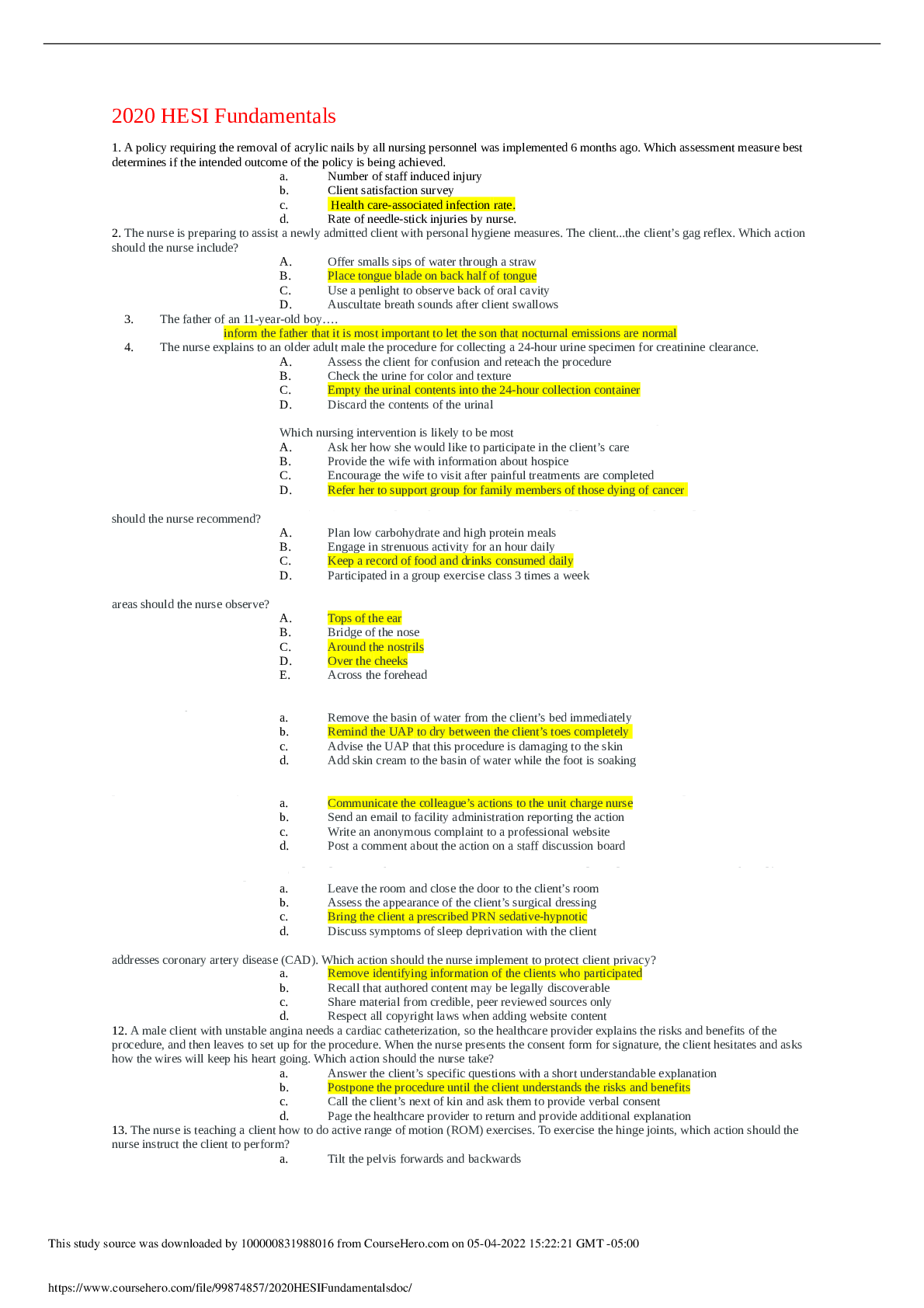

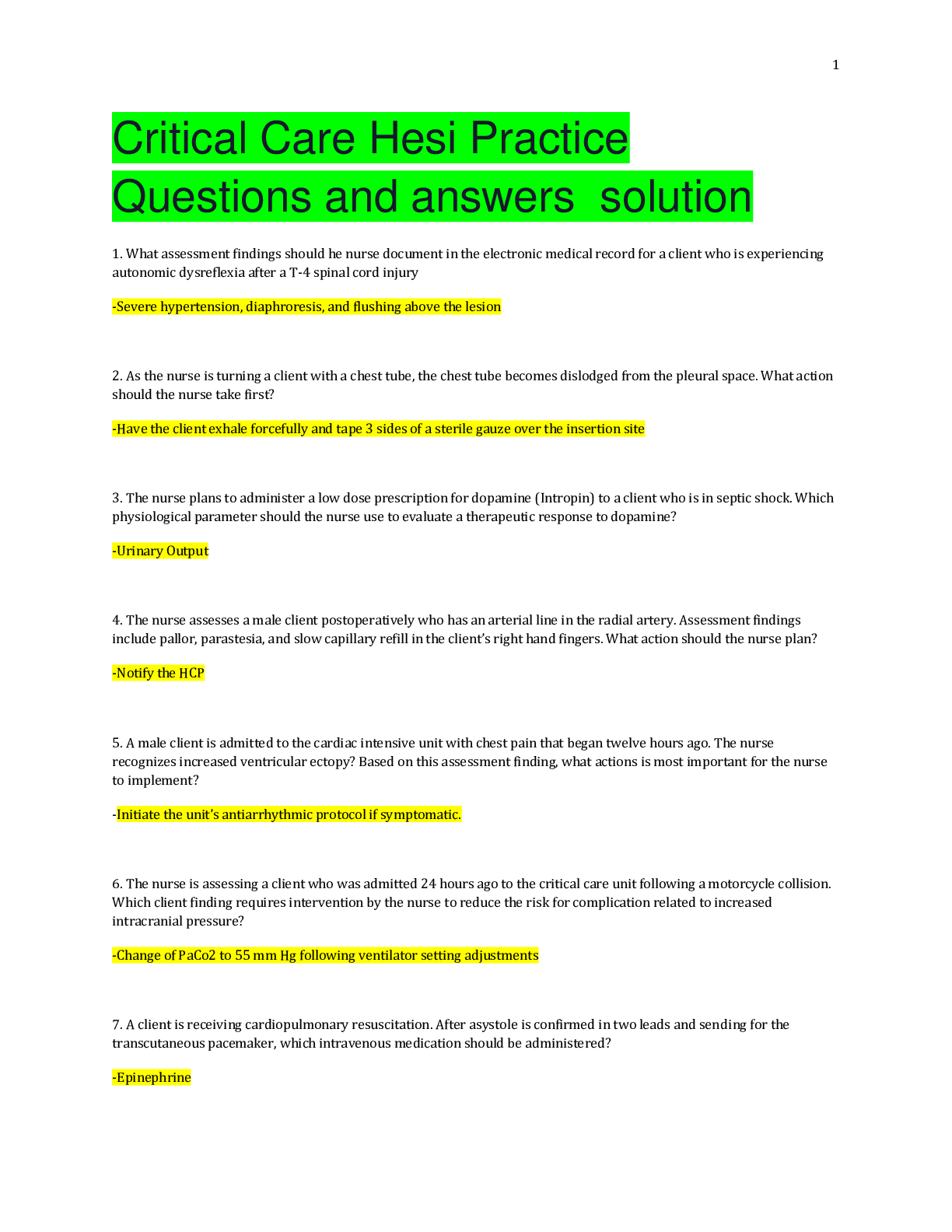
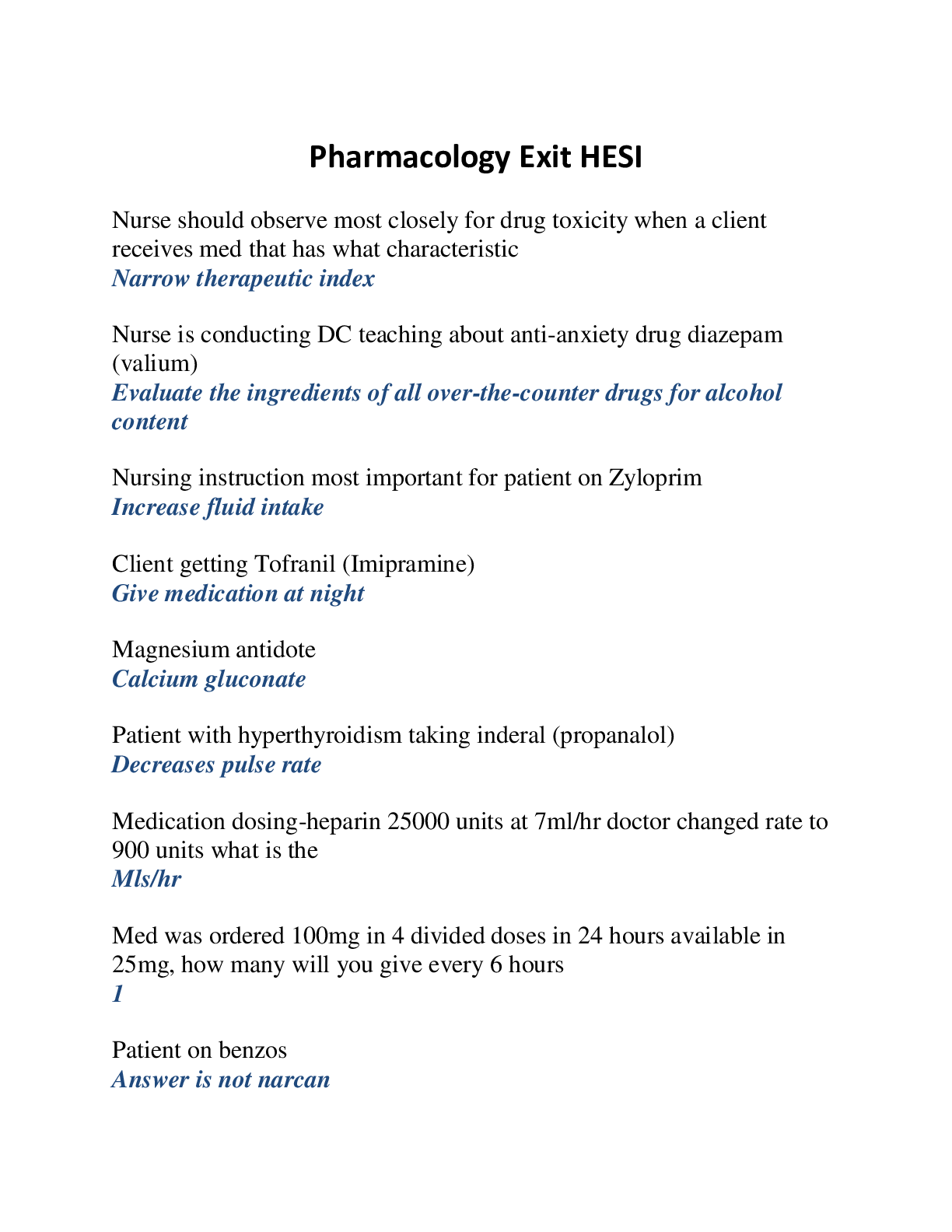
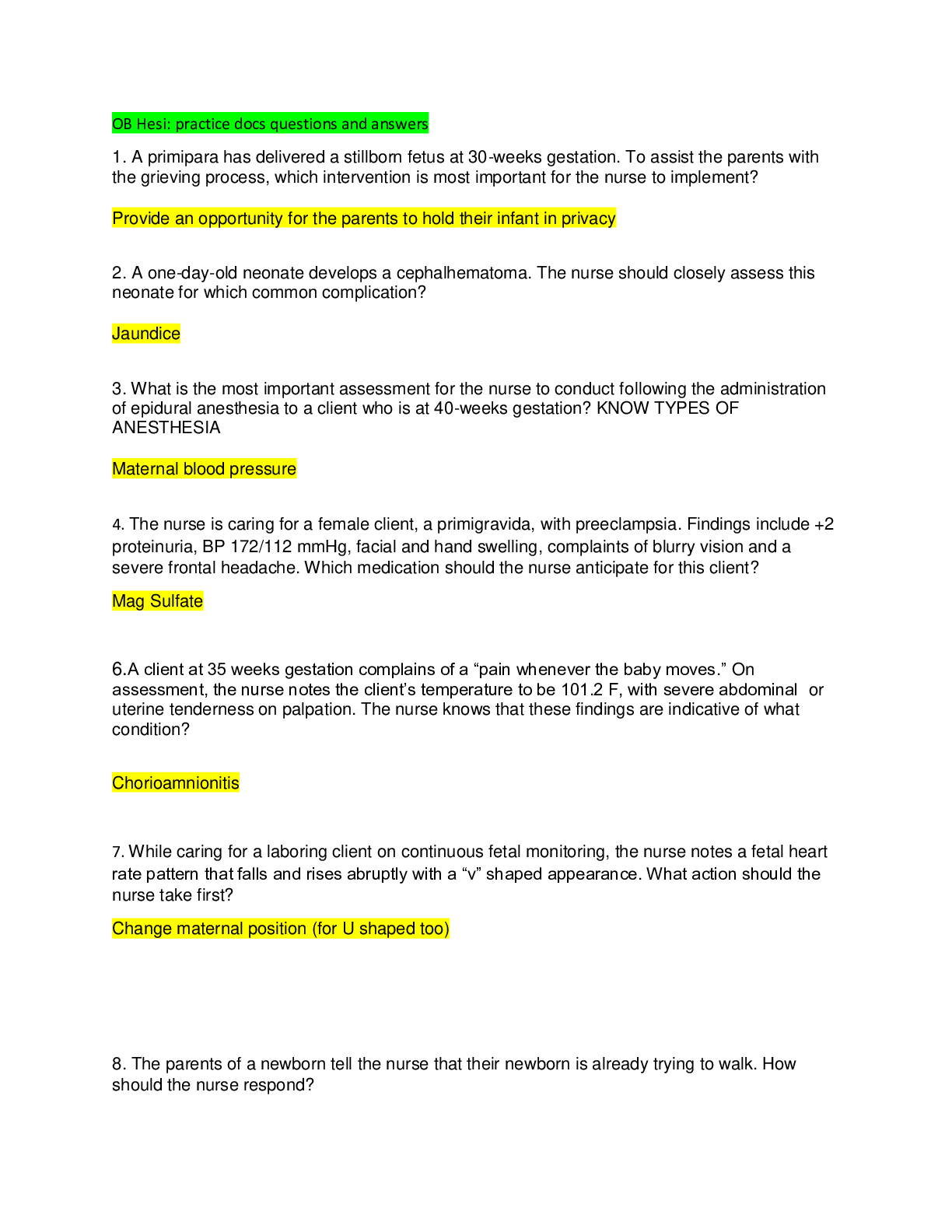

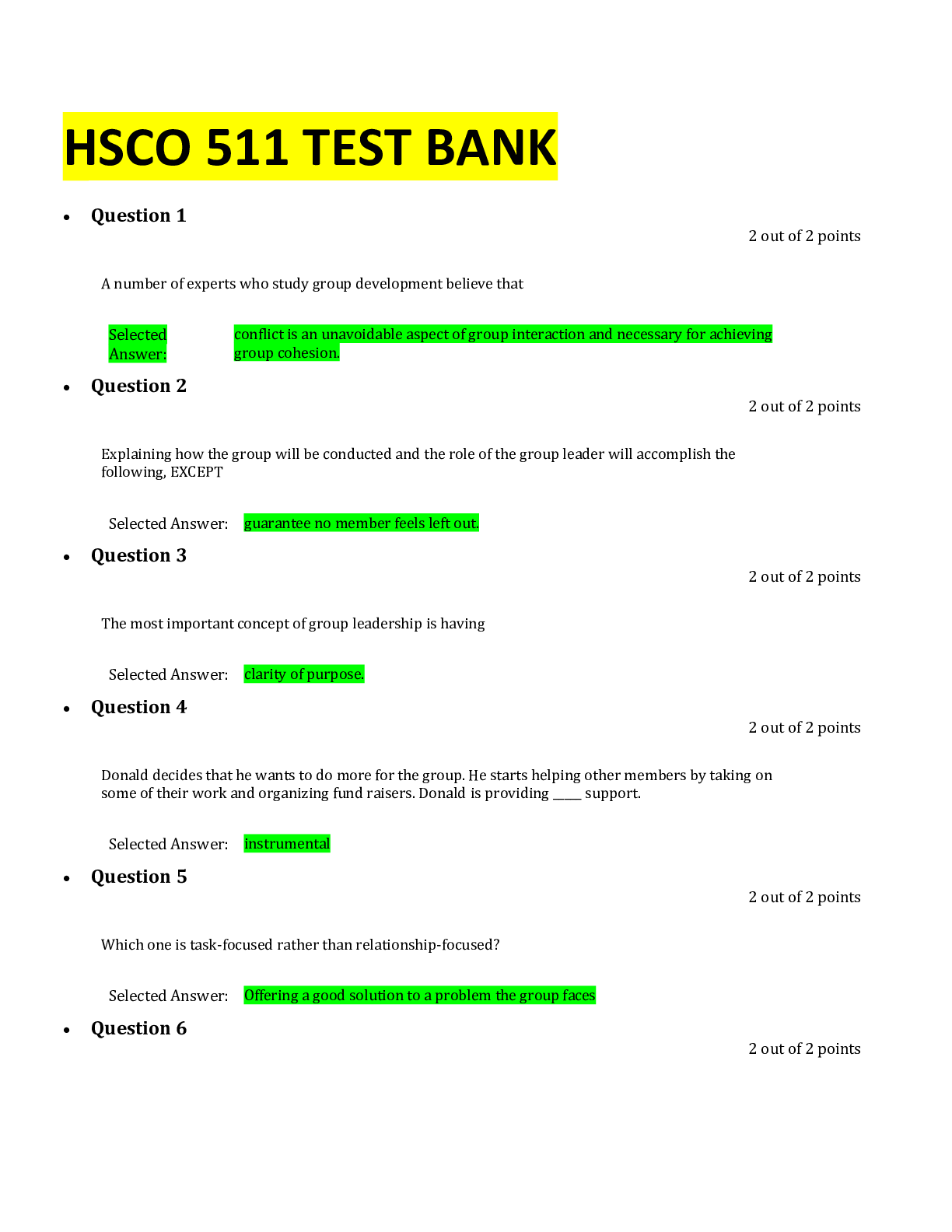



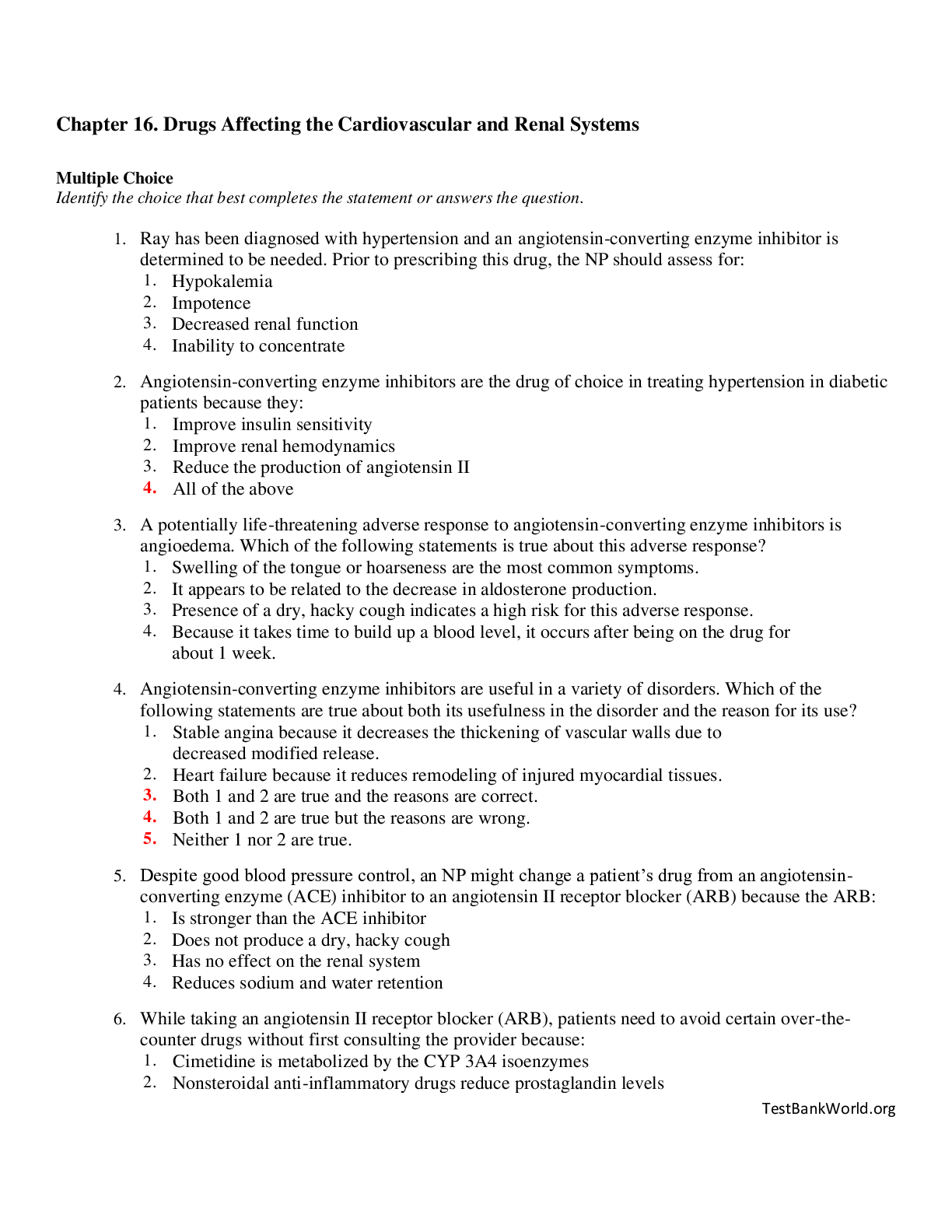

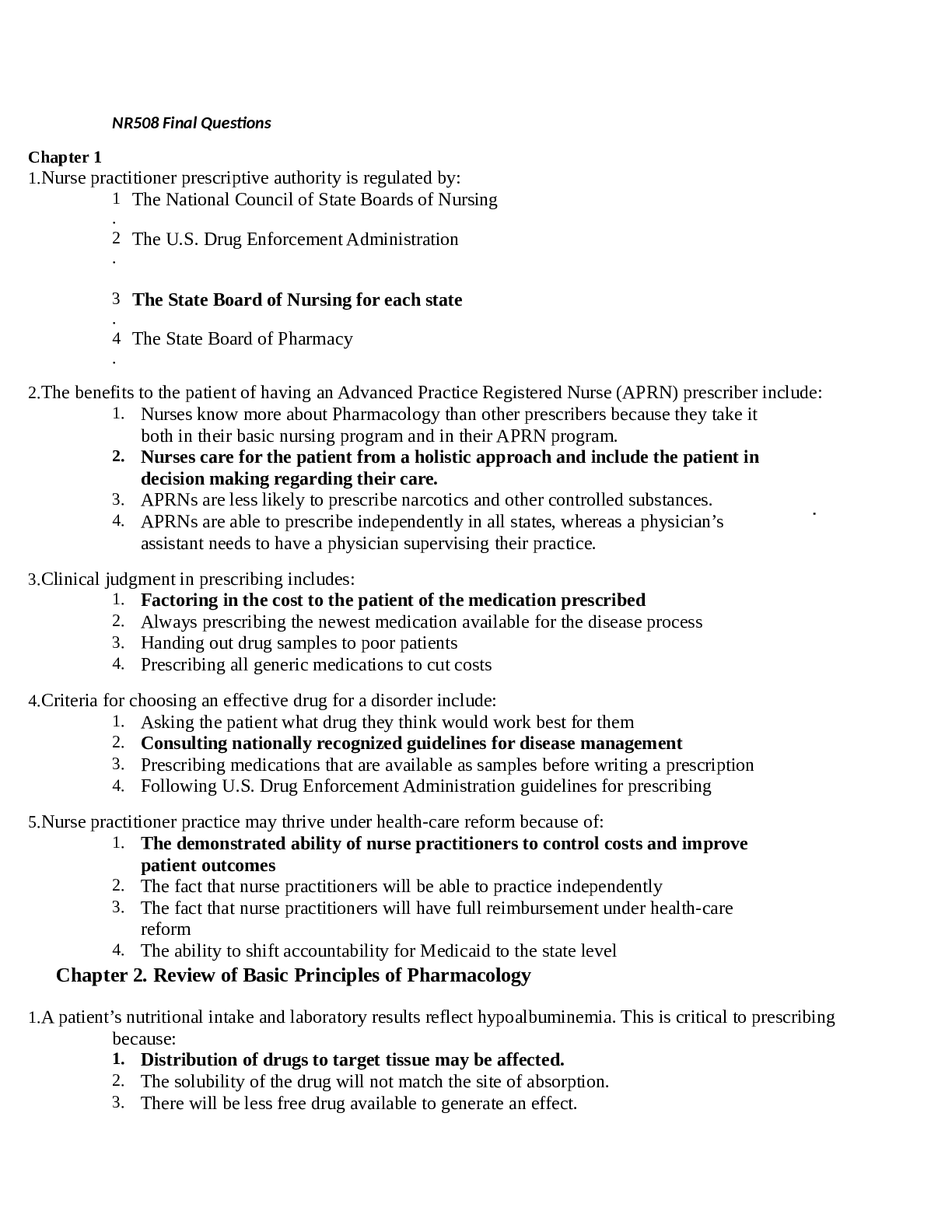
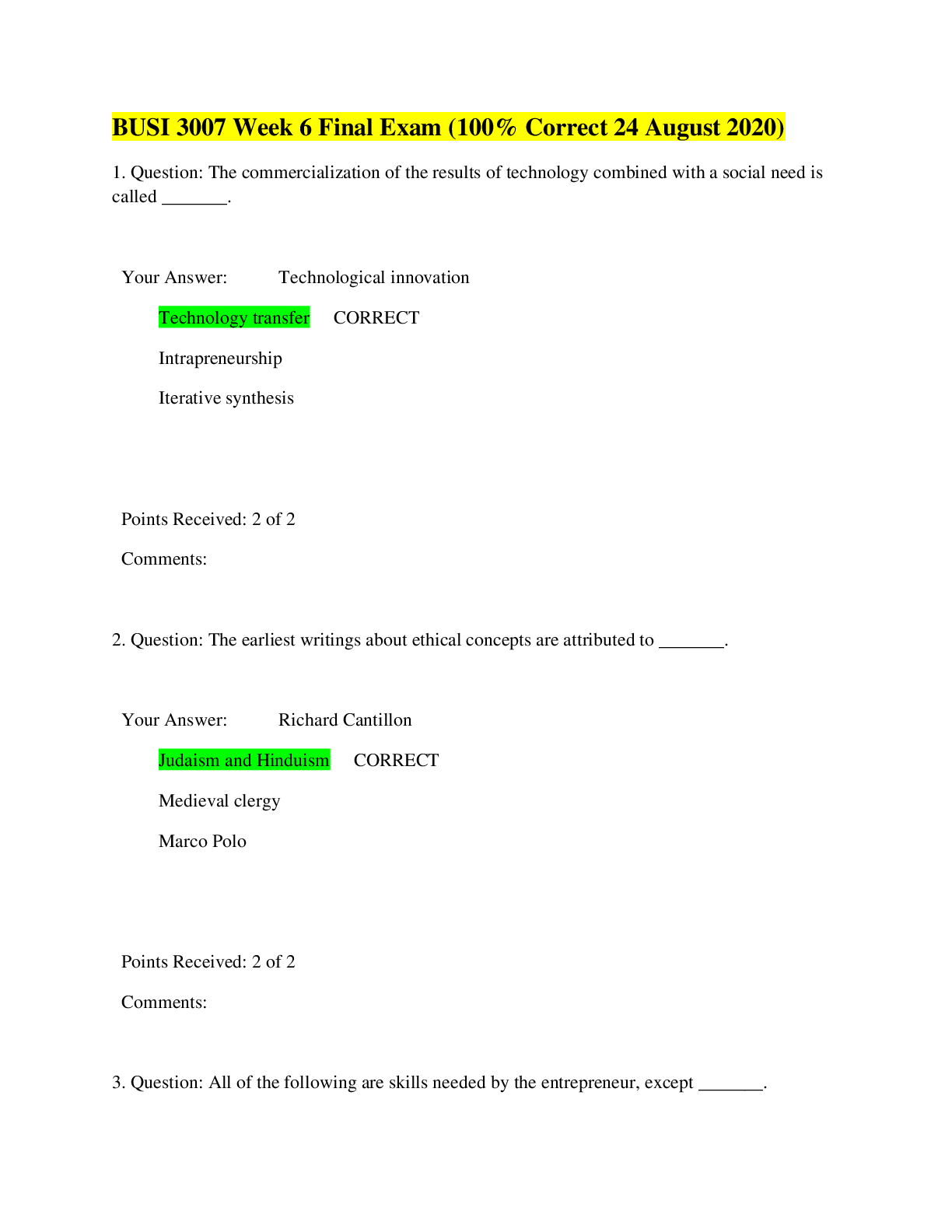
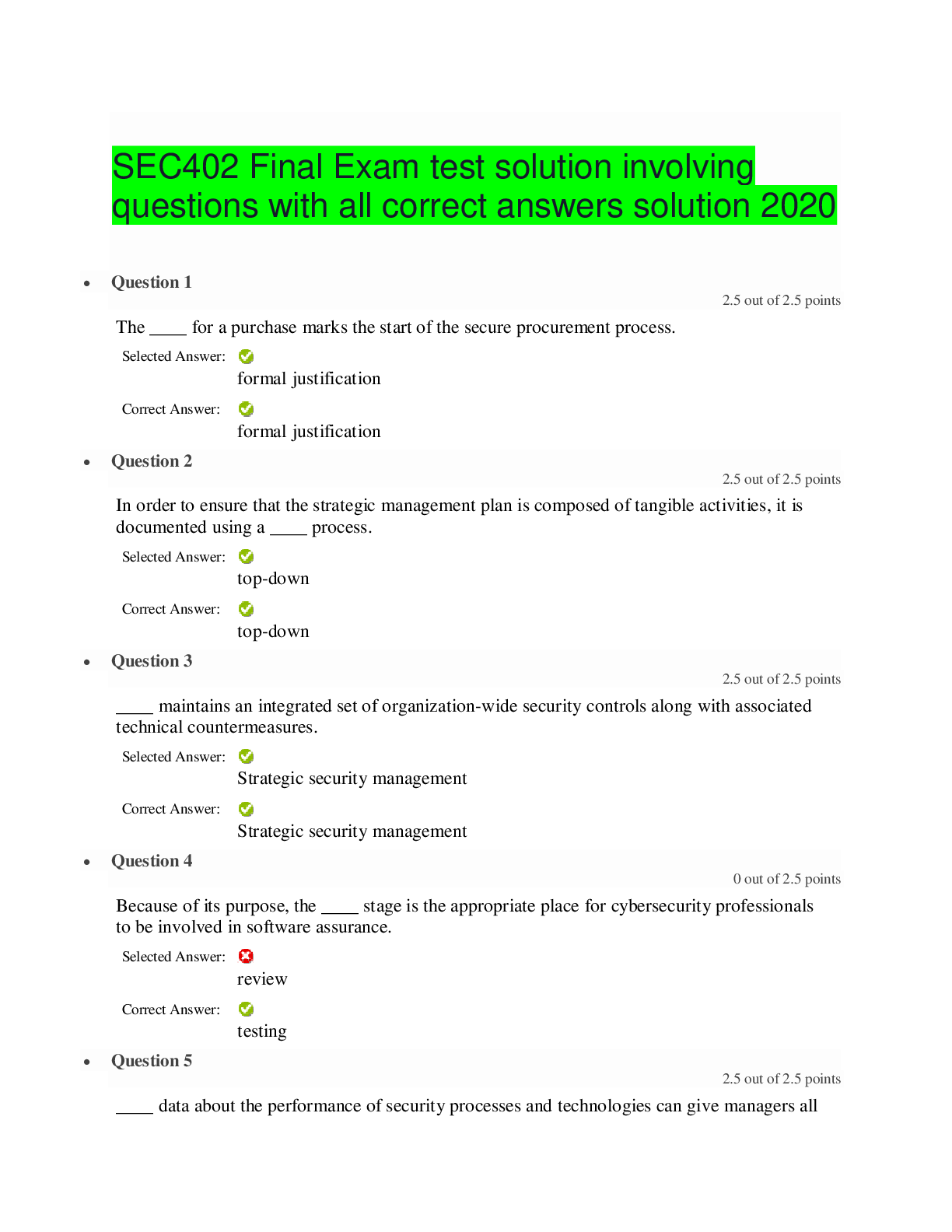
, 100% Correct, Download to Score A.png)

